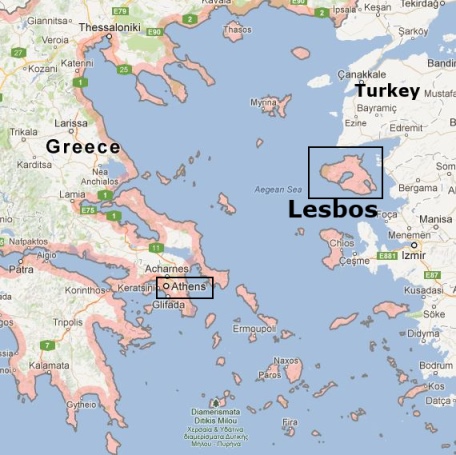- HOME
- NE Aegean Isles
- Lesbos
- Birdwatching on Lesbos
Birdwatching on
Lesbos
For keen birdwatchers, birdwatching on Lesbos offers a chance to see over 300 species in diverse habitats on a key migratory route between Europe and Africa.
Birdwatching on the Greek island of Lesbos is a wonderful experience for nature enthusiasts and ornithologists alike. Situated in the northeastern Aegean Sea, Lesbos is one of the top birdwatching destinations in Europe, particularly renowned for its impressive diversity of species and its strategic location along migratory routes. With over 325 recorded species, the island is a prime destination for birdwatching.
Birdwatching on Lesbos
Why Go Birdwatching on Lesbos
Lesbos' geographical position plays a key role in its rich birdlife. Located on the migration route between Europe and Africa, the island witnesses spectacular seasonal displays. Spring (March-May) sees a surge in bird activity as birds like storks, raptors, and warblers embark on their northward journey. Autumn (September-November) offers another opportunity to witness the southbound migration.
Where to Go Birdwatching on Lesbos
One of the prime spots for birdwatching on Lesbos is the Kalloni Salt Pans. This area is easily accessible and offers a chance to see a variety of waders, terns, and other waterfowl, flamingos, black-winged stilts, avocets, and several species of ducks and egrets.
The nearby Kalloni Gulf is also a hotspot, especially during the spring and autumn migrations. Birdwatchers can expect to see flamingos, avocets, and ruddy shelducks, among others.
Another significant area is the Napi Valley, which is particularly lush and green, attracting a different set of species including orioles, warblers, and the elusive Krüper's Nuthatch, which is endemic to the region.
The Ipsilou monastery, located in the western part of Lesbos on the road to Sigri, is another excellent location for observing raptors. Positioned on a hill, it offers panoramic views and is a perfect vantage point for spotting eagles, buzzards, and falcons as they soar overhead.
Petrified Forest of Sigri: This unique geological wonder, with its petrified trees, also provides refuge for birds of prey in particular. Keep an eye out for golden eagles, the agile black kite, and peregrine falcons.
Western Volcanic Hillsides: Arid and rocky, this area is a hotspot for some rare residents. Here, you might encounter the elusive cinereous bunting, a critically endangered songbird, and other unusual birds like Cretzschmar's bunting, the Rock sparrow, and the Isabelline Wheatear.
Mountaineous Interior: Lush forests and rolling hills characterize the central region. This is prime territory for spotting resident birds like the Western Rock Nuthatch, Sombre Tit, Blue Rock Thrush, and the majestic Long-legged Buzzard.
Beyond the Big Names: While the above locations cater to specific species, don't forget to explore other regions of Lesbos. The charming village of Agiasos is known for its resident birdlife, including the melodious European nightingale. The western coast, with its long beaches, attracts gulls and terns, while the north offers excellent opportunities to see shorebirds like sandpipers and plovers.
When to Go Birdwatching on Lesbos
Spring (April to June) is generally considered the best time to visit Lesbos for birdwatching, as the migration peaks and the weather is pleasant. However, autumn also sees a significant passage of birds, particularly raptors. Even outside these peak times, Lesbos's resident bird species and winter visitors make it a year-round destination for bird enthusiasts.
Don't miss our page on the Best Time to Visit Lesbos.
How to Go Birdwatching on Lesbos
For those new to birdwatching or seeking to enhance their experience, local guides and birdwatching tours are available. These experts can provide valuable insights into finding and identifying the various species, as well as understanding their behaviors and habitats.
Overall, Lesbos is a must-visit for birdwatchers looking to add significant ticks to their life lists while enjoying the natural beauty and cultural richness of one of Greece's largest islands.
Latest Posts
-
The Lesser-Known Traditions of Greek Easter
Step off the beaten path this spring and discover the enchanting — and often surprising — Easter traditions found across Greece. -
Easter in the Mystical Castle of Monemvasia
In the castle town of Monemvasia, with its dramatic medieval backdrop and sea views, Easter is a deeply spiritual and atmospheric experience. -
Sifnos: Greece’s Hidden Culinary Star on the Rise
Sifnos, a Cycladic island, is gaining fame for its rich culinary heritage, especially the beloved melopita honey-cheese tart. -
Easter in Leonidio: A Tapestry of Light, Culture and Cliffs
In Leonidio, Easter comes alive with handmade hot air balloons in the sky and lanterns made from bitter oranges in the streets. -
April 9 Strike in Greece to Impact Public Transport, Ferries and Air Travel
Transportation and travel across Greece will face disruptions on Wednesday, April 9, as public transport, ferry and aviation workers join a nationwide strike called by Greek labor unions. -
Ancient Theater of Lefkada Brought Fully to Light Following Systematic Excavation
The Greek Culture Ministry has announced that the first ancient theater ever identified in the Ionian Islands has recently been brought fully to light on Lefkada, revealing an impressive monument that… -
Seven Greek Traditions Recognized as Intangible Cultural Heritage
From traditional barrel-making to age-old folk dances, seven new entries on Greece’s National Inventory preserve the country’s living heritage for future generations. -
Greek Air Traffic Controllers to Hold 24-hour Strike, Disrupting Flights on April 9
The Hellenic Air Traffic Controllers Union have announced a 24-hour strike for Wednesday, April 9, in response to the protest called by the Civil Servants’ Confederation (ADEDY). The strike is being h… -
Ten Best Budget Hotels on Santorini
Greece Travel Secrets picks the ten best budget hotels on Santorini, some with caldera views, some near beaches and some close to the heart of Fira. -
No Ferries in Greece on April 9 as Seamen Join Nationwide Strike
The Pan-Hellenic Seamen’s Federation (PNO) has announced its participation in the 24-hour strike called by the General Confederation of Greek Labor (GSEE) on Wednesday, April 9. The strike, which will…











